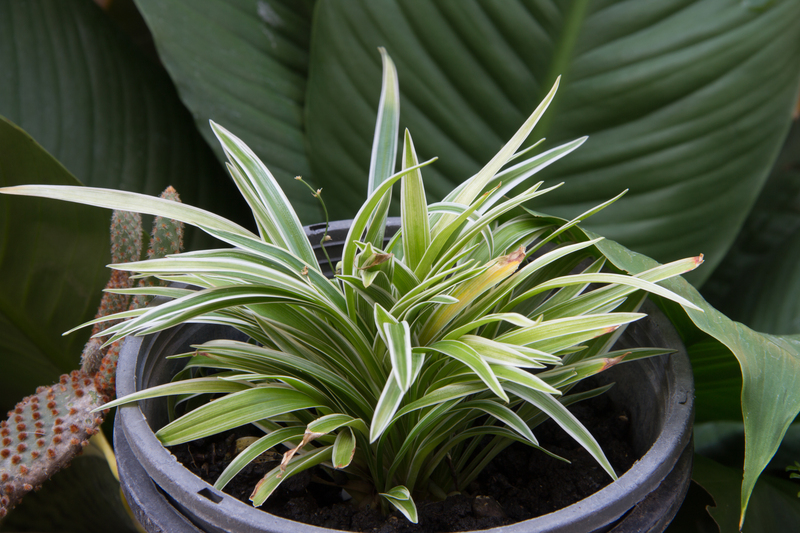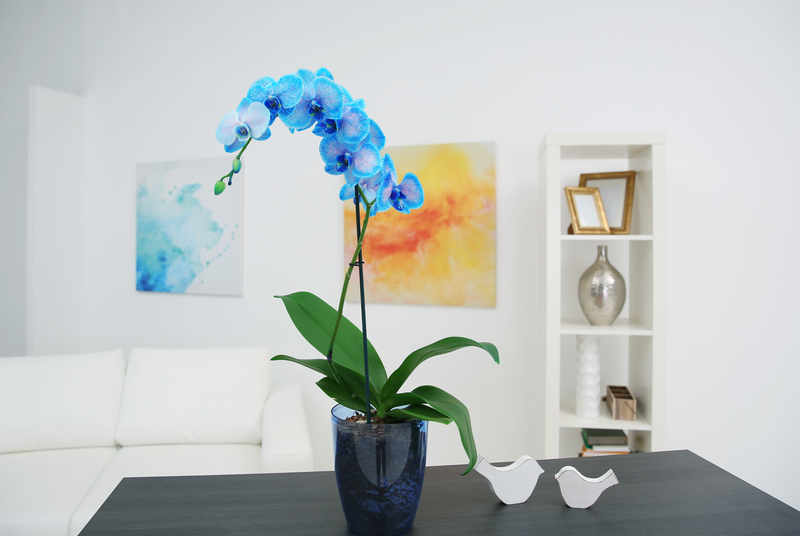Cultivating Vibrant and Resilient Orchids
Posted on 02/07/2025
Cultivating Vibrant and Resilient Orchids: An In-Depth Guide
Orchids are among the most mesmerizing and diverse plant families on Earth. Their exotic blooms and fascinating growth habits captivate plant lovers worldwide, making them one of the most coveted houseplants. However, achieving vibrant and resilient orchids is both an art and a science, requiring careful attention to their unique needs and environments. In this comprehensive article, we'll explore proven strategies, actionable tips, and expert recommendations for cultivating robust, healthy orchids that thrive and bloom year after year.

Understanding the World of Orchids
Orchidaceae, the family to which all orchids belong, is one of the largest, boasting over 25,000 naturally occurring species and more than 100,000 hybrids. With such diversity, orchid care isn't one-size-fits-all. Yet, most commonly grown orchids have similar requirements and can be nurtured with the right approach.
Why Orchids?
- Unmatched beauty - Intricate shapes and dazzling colors make orchids stand out.
- Longevity - Unlike many flowers, orchid blooms can last for weeks to months.
- Air purifying - Orchids contribute to cleaner household air.
- Variety - From Phalaenopsis (Moth Orchids) to Dendrobiums, there's an orchid for every gardener.
But what does it take for an orchid to not just survive, but to turn into a thriving, vigorous specimen?
The Foundations of Healthy Orchid Cultivation
1. Choosing the Right Orchid Variety
The first step toward growing strong orchids is selecting a variety that matches your home environment and skill level. Popular beginner-friendly orchid types include:
- Phalaenopsis (Moth Orchid): Adaptable, blooms for months, needs moderate light.
- Cattleya Orchid: Known for showy flowers and pleasant fragrance, prefers bright, indirect light.
- Dendrobium Orchid: Hardy and versatile, some species bloom multiple times a year.
- Oncidium Orchid: Thrives in typical household conditions, produces abundant blooms.
Understanding each orchid's specific requirements will fuel your long-term success in cultivating robust, vibrant orchids.
2. Light: The Key to Vigorous Growth
Light is crucial for orchid health and flower production.
- Phalaenopsis: Prefers bright, indirect light, such as an east-facing window.
- Cattleya: Thrives with stronger filtered light; leaves should be light green.
- Too Much Sun: Can scorch leaves, turning them yellow or brown.
- Too Little Light: Leaves become dark green, and the orchid may fail to bloom.
Tip: A sheer curtain can help filter direct sunlight. Move plants closer to windows in winter and further away during hot summer months.
3. Watering Techniques for Resilient Orchids
Overwatering and underwatering are the top killers of orchids. Their roots need airflow as much as moisture. Here's how to balance it:
- Check the Potting Medium: Water when the top inch feels dry; bark dries faster than sphagnum moss.
- Morning Watering: Water your orchid early in the day so roots can dry by evening.
- Drainage: Always use pots with drainage holes. Standing water leads to root rot.
- Type Matters: Epiphytic orchids (like Phalaenopsis) require less frequent watering than terrestrial orchids.
Resilient orchids thrive on consistent, appropriate watering. When in doubt, slightly underwater rather than risk root rot.
4. Humidity: Mimicking the Orchid's Natural Environment
Orchids naturally grow in humid climates, often as epiphytes clinging to trees. Indoor environments can be too dry, especially in winter. For robust orchid growth, maintain humidity between 40% and 60%:
- Humidity Tray: Place pebbles in a shallow tray of water beneath your orchid's pot.
- Grouping: Orchids release water vapor; group them to improve local humidity.
- Misting: Lightly mist leaves in the morning; avoid water pooling in leaf axils.
- Humidifier: In dry climates, a room humidifier is highly effective.
Monitor with a hygrometer to ensure your indoor environment supports vibrancy and resilience.
5. Orchid-Friendly Potting Media
Orchid roots require air and rapid drainage.
- Bark Mix: Most orchids prefer a mix of bark, charcoal, and perlite.
- Sphagnum Moss: Retains moisture for orchids requiring extra humidity.
- Synthetic Media: Clay pebbles or foam chunks increase airflow and reduce fungal risk.
Repot your orchid every 1-2 years, or when the potting media breaks down, ensuring plenty of air reaches the roots for healthy, vigorous growth.
Nutrition: Feeding Your Orchids for Color and Strength
The Right Orchid Fertilizer
Fertilizing orchids is critical for encouraging beautiful blooms and robust resilience against disease.
- Balanced Fertilizer: Use a gentle 20-20-20 (N-P-K) fertilizer, diluted to quarter strength.
- "Weakly, Weekly": Feed with every other watering during active growth.
- Flush Monthly: Water thoroughly without fertilizer once a month to prevent salt build-up.
- Bloom Booster: Switch to a higher phosphorus formula when bloom spikes appear.
Tip: Always water your orchid before applying fertilizer to avoid root burn.
Repotting and Root Care for Enduring Orchids
When and How to Repot Orchids
Repotting supports vigorous orchids by refreshing the growing medium and allowing space for expanding roots.
- Best Time: Repot after your orchid has finished flowering (usually every 1-2 years).
- Method:
- Remove old potting media and dead roots.
- Place in fresh media, ensuring roots spread out naturally.
- Water lightly and keep in shaded area for a week post-repotting.
Healthy roots are plump and white or green when moist; brown or mushy roots indicate rot.
Orchid Pests and Disease Management
Identifying Common Problems
Even well-cared-for orchids can occasionally face threats. Be on the lookout for:
- Scale and Mealybugs: Small, waxy pests clustering at leaf joints.
- Spider Mites: Fine webbing and leaf stippling, usually in low humidity conditions.
- Root Rot: Mushy, foul-smelling roots from overwatering.
- Leaf Spots or Yellowing: Possible fungal or bacterial infection.
Safe and Effective Treatments
- Isolation: Move infected orchids away from others to prevent spread.
- Physical Removal: Use a cotton swab with rubbing alcohol to remove pests.
- Safer Soap Sprays: Insecticidal soap or neem oil can treat infestations.
- Sanitation: Always sterilize pruners before and after use on orchids.
- Adjust Watering: Improve air flow and moisture management to discourage fungal/bacterial problems.
Monitor regularly to keep your orchids resilient and vibrant for years to come.
Promoting Brilliant Blooms
Stimulating Flowering Cycles
- Temperature Fluctuations: A 10?F drop at night (especially in fall) can trigger blooming in many orchids, especially Phalaenopsis.
- Light: Ensure your orchid receives the correct intensity for its type to promote bud development.
- Rest Periods: Some orchids, like Dendrobium nobile, require dry, cool spells after growth before they flower.
- Avoid Repositioning: Once a flower spike appears, keep the orchid's orientation the same to prevent bud drop.
Winter Orchid Care: Ensuring Resilience Through the Seasons
- Reduce Watering: Lower light and temperature slow growth; only water as needed.
- Humidity: Indoor heating can dry out air; supplement with trays or humidifiers.
- Drafts: Keep orchids away from cold windows and blasts of hot air.
- Light Augmentation: Consider grow lights during short winter days to maintain vigor and encourage blooming.
Proper care through winter creates strong, resilient orchids ready to burst into bloom in spring.
Propagation: Growing More Orchids from the Best
Keiki and Division Methods
- Keiki ("baby"): Some orchids, like Phalaenopsis, produce offshoots. When roots form, separate and pot up new plants.
- Division: For sympodial orchids (e.g., Cattleya, Dendrobium), gently separate mature clumps with at least three healthy pseudobulbs each.
Propagation keeps your collection dynamic and allows you to share vibrant, resilient orchids with friends and fellow enthusiasts.
Expert Tips for Cultivating Vibrant and Resilient Orchids
- Observe Regularly: Check for changes in leaves, roots, and blooms to spot issues early.
- Label Your Orchids: Keep track of species, bloom times, and successful techniques.
- Rotate Your Collection: Orchids benefit from fresh air outdoors in warm, protected spots during summer.
- Be Patient: Strong, healthy orchids may take time to settle and bloom spectacularly.
- Educate Yourself: Refer to orchid societies, online communities, and reputable books for ongoing learning.

Common Questions About Growing Orchids
How Do I Make My Orchids Bloom More Often?
Achieving frequent blooms depends on providing optimal lighting, correct feeding, rest periods, and occasional temperature drops at night. Addressing any root or pest issues promptly helps the orchid conserve energy for flowering.
Why Are My Orchid Leaves Turning Yellow?
Yellowing leaves may indicate overwatering, old age (natural leaf drop), insufficient light, or disease. Evaluate care routines, check roots for rot, and ensure proper humidity.
Can I Keep Orchids Outdoors?
Many orchids benefit from being outside in mild, shady conditions during summer. Be sure to acclimate them slowly to brighter light and protect from pests and rainstorms.
How Often Should Orchids Be Repotted?
Repot orchids every 1-2 years or when potting media breaks down. Repot after blooming to minimize stress.
Final Thoughts: Patience Rewards the Orchid Lover
Cultivating vibrant and resilient orchids is deeply rewarding. These stunning plants inspire patience, observation, and an appreciation for the subtle rhythms of nature. By providing the right light, water, humidity, nutrition, and vigilant care, even beginner growers can enjoy the beauty and longevity of orchids that stand out with robust health and dazzling flowers.
Whether you're starting your first Phalaenopsis or building a diverse collection of rare species, implementing these guidelines ensures your orchids will not only survive but truly thrive. Happy growing!

